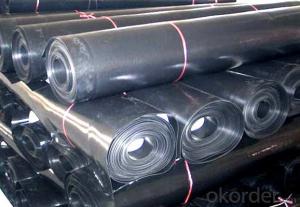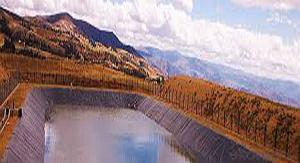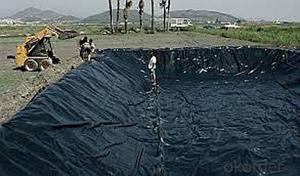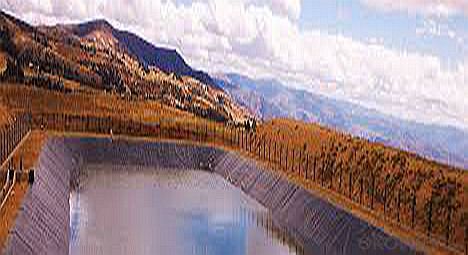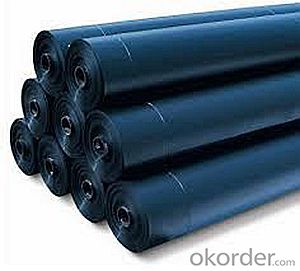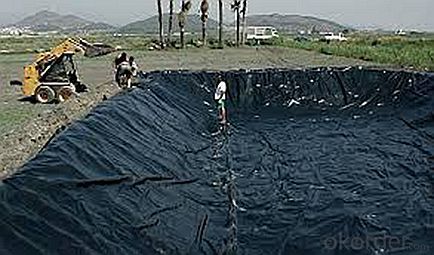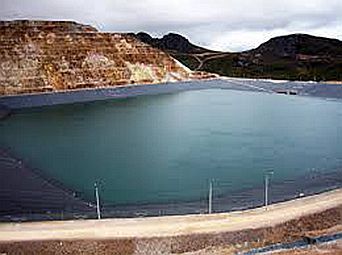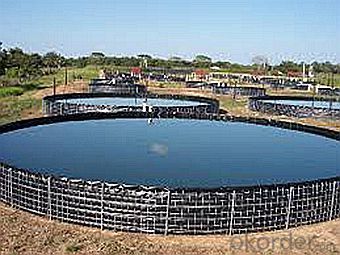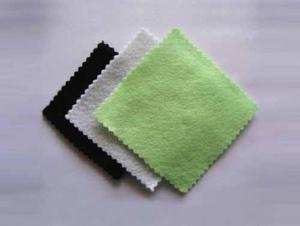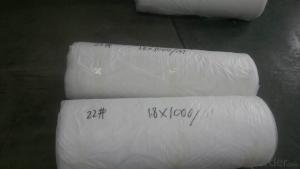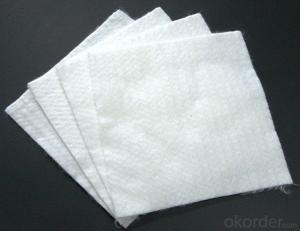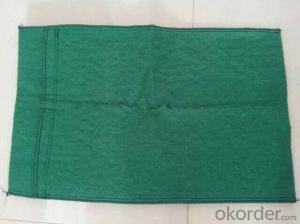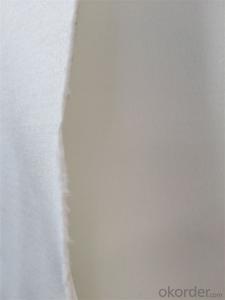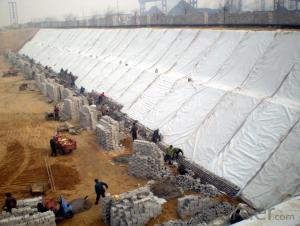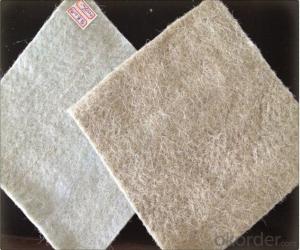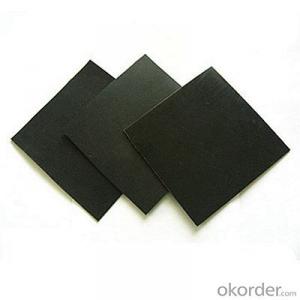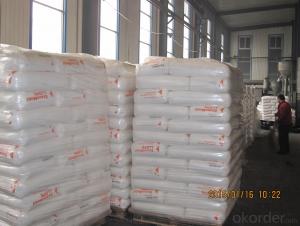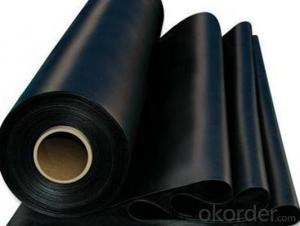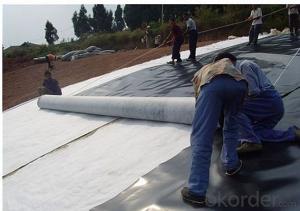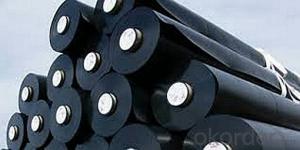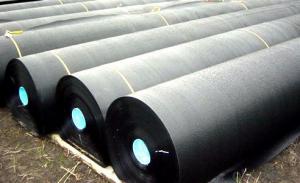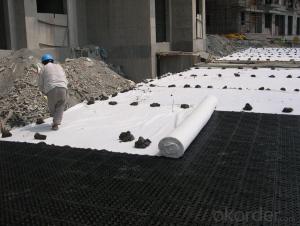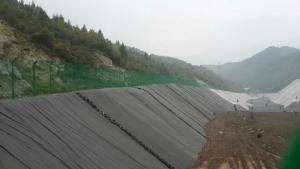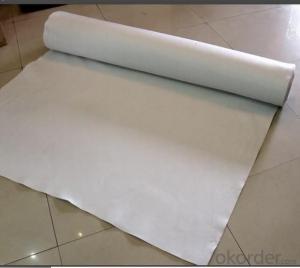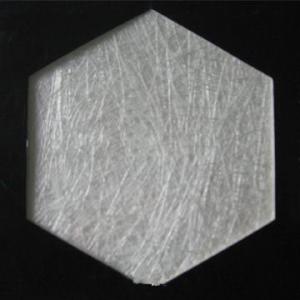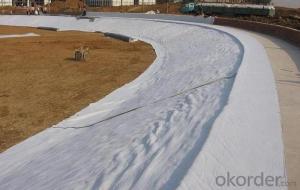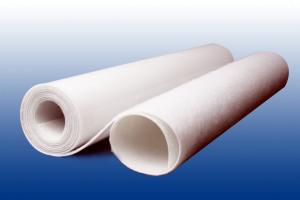Geotextile Membrane for Gravel Driveways - Linear Low-Density Polyethylene Geomembrane as Waterproof Facing for Earth and Rockfill Dams
- Loading Port:
- China main port
- Payment Terms:
- TT OR LC
- Min Order Qty:
- 1000 m²
- Supply Capability:
- 1000000 m²/month
OKorder Service Pledge
OKorder Financial Service
You Might Also Like
Specification
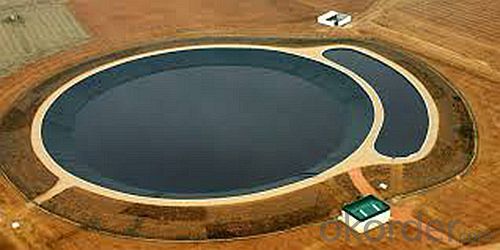
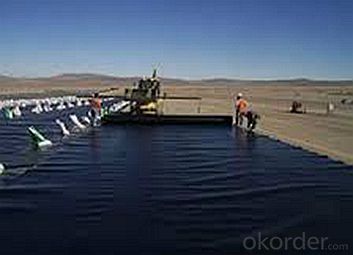
Type:
Geomembranes
Place of Origin:
Shandong, China (Mainland)
Brand Name:
Lonrace
Model Number:
geomembrane
Material:
EVA, HDPE, LDPE, LLDPE, PVC
Color:
Black
Application:
Dam,traffic tunnel,road,airport,drainage,
Thickness:
1mm-3mm
Application
1. Environmental protection, sanitation (such as solid waste landfills, sewage treatment plants, power plants Chi-conditioning, industrial, hospital solid waste, etc.) .
2. Water (such as rivers, lakes and reservoirs of the anti-dam, plugging, reinforcement of the canal seepage, the vertical wall of the heart, slope protection, etc.).
3. Municipal Engineering (subway, on the ground floor of the building, planted roof, the roof garden of anti-seepage, sewage pipes lining, etc.).
4 .Landscape (man-made lake, river, reservoir, golf courses reservoirs of the substrate, slope protection, green lawn of the waterproof moisture, etc.).
5. Petrochemical (chemical plants, oil refineries, gas storage tanks of the anti-chemical reaction tanks, sedimentation tanks of the lining, etc.).
6 Mining (washing and pool heap leaching, the ash-field, dissolved, precipitation, the yard, the tailings seepage substrates, etc.) .
Our Service
Quality assurance
1.On a regular basis or as per your request,we entrust national testing agencies to conduct quality inspections
2. Strictly in accordance with the ISO9001-2008 international quality system standard,we monitor and manage the whole process throughout production,quality testing,and measurement to ensure product quality
3. For quality-related construction delay or substandard construction(except for damage or losses due to customer’s responsibility or irresistible natural disasters),we have refunding,replacement,and repair services.We will respond to customers’ feedbacks on quality issues within 24 hours.
Q: What kind of payments does jenor support?
A: T/T, L/C, Cash are accepted.
Q: Do you charge for the samples?
A: Accordeing to our company policy, the samples are free, we only charge the freight fee. And we will return the freight fee during the next order.
Q: Can you produce according to customers' design?
A: Sure, we are professional manufacturer, OEM and ODM are both welcome.
Q: Do you have other products?
A: Yes, please check the pictures:
Packaging & Shipping
Packing: PLASTIC FILM INSIDE, AND WOVEN BAG OUTSIDE
Shipping: About 15 days after receipt the deposit
geotextile fabric
permeability,filtration,easy for construction
ISO and CE certificate
Good quality and competitive price
- Q: Can geotextiles be used for reinforcement in asphalt overlays?
- Yes, geotextiles can be used for reinforcement in asphalt overlays. Geotextiles are commonly used as a separator and reinforcement layer in asphalt overlays to improve the performance and longevity of the pavement. They help prevent the mixing of subgrade soil with the asphalt layer, provide stability, and enhance the load-bearing capacity of the pavement.
- Q: What are the factors to consider when designing with geotextiles?
- When designing with geotextiles, several factors need to be considered. These include the type and quality of the geotextile material, the specific application and project requirements, the site conditions and soil properties, the expected loads and stresses, the installation and maintenance procedures, and the long-term performance and durability of the geotextile. Additionally, factors such as cost-effectiveness, environmental impact, and regulatory compliance should also be taken into account during the design process.
- Q: Do you need to cover the geotextile?
- Generally less than geotextile, I am specializing in the production of geotechnical materials
- Q: How do geotextiles help in slope stabilization?
- Geotextiles help in slope stabilization by providing reinforcement and erosion control. They are placed on slopes to prevent soil erosion and the movement of soil particles, effectively stabilizing the slope. The geotextiles act as a barrier, allowing water to pass through while retaining the soil in place. This helps to prevent landslides, soil erosion, and slope failure, ensuring the long-term stability and safety of the slope.
- Q: Can geotextiles be used in oil and gas industry applications?
- Yes, geotextiles can be used in oil and gas industry applications. Geotextiles are commonly used for erosion control, soil stabilization, and filtration purposes in various industries, including the oil and gas industry. They can be used in applications such as pipeline construction, drilling operations, and containment systems. Geotextiles help to prevent soil erosion, provide stability for construction sites, and aid in filtration and separation of materials in oil and gas operations.
- Q: What is the role of geotextiles in soil reinforcement?
- Geotextiles play a crucial role in soil reinforcement by providing mechanical strength and stability to the soil. They are used to enhance the overall performance of the soil by distributing loads, preventing erosion, controlling filtration, and promoting drainage. Geotextiles act as a barrier against soil movement and help to improve the stability and longevity of structures built on or with soil.
- Q: Geotextile strength index with interpolation method how to calculate? Then geotextile variation, I do not quite understand, pro, if you know whether to tell me Oh! Very anxious
- Geotextile strong indicators of the interpolation method: For example: geotextile 150 grams of breaking strength is 4.5KN, geotextile 100 grams of breaking strength is 2.5KN, then the geotextile 130 grams of broken strength is how much? The calculation method is: 4.5KN-2.5KN = 2KN (that is, 50 grams of geotextile strength) 2KN by 50 grams multiplied by 30 grams is equal to 1.2KN then geotextile 130 grams of breaking strength is 3.7KN.
- Q: Can geotextiles be used for erosion control in river channels?
- Yes, geotextiles can be used for erosion control in river channels. Geotextiles are permeable fabrics that can be placed on the banks or beds of rivers to prevent soil erosion. They can help stabilize the soil, control water flow, and provide protection against scouring and sediment loss, thus reducing erosion in river channels.
- Q: Waterproof geotextile in which the location of the culvert, what use
- Used in the top and side, lining the inside, mainly the role of waterproof to prevent water seepage. Huazhi geotechnical materials manufacturers need to answer for your needs
Send your message to us
Geotextile Membrane for Gravel Driveways - Linear Low-Density Polyethylene Geomembrane as Waterproof Facing for Earth and Rockfill Dams
- Loading Port:
- China main port
- Payment Terms:
- TT OR LC
- Min Order Qty:
- 1000 m²
- Supply Capability:
- 1000000 m²/month
OKorder Service Pledge
OKorder Financial Service
Similar products
Hot products
Hot Searches
Related keywords
